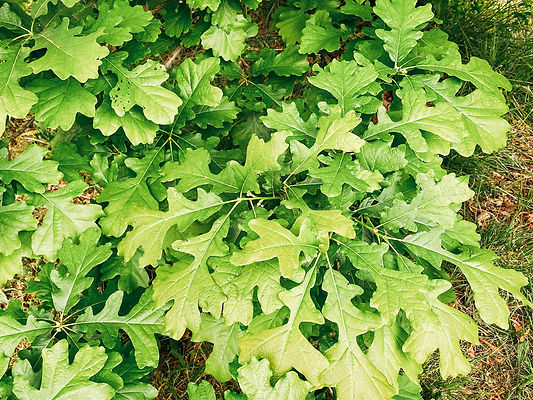
Strategic tree and forest establishment and regeneration on the Southern Tablelands

Growing Oaks
The following article is courtesy of David Watson,
convener of Bungendore Landcare


Growing Oaks
Oaks are the best trees in the world.
They yield acorns and leaves, fodder for livestock and poultry. Their leaves build soil through natural leaf fall or raked up to include in the compost bin. They are drought tolerant (tap-rooted), beautiful and have excellent timber. Their dense shade cools everything in a heatwave. What’s more, they are non-flammable so can be planted close to buildings for their cooling effect.
John Walter planted an avenue of Hungarian Oaks along Turallo Creek next to the community garden in Bungendore. Collect some acroens from under them in the autumn and spread them around. We are fortunate to have a wide range of oaks to collect acorns from in Canberra's streets too.
You can get them started in long thin tubes, or direct seed them where you want the tree to grow. Direct seeding has the advantage of no disturbance to the tap root.
Merediths Selection:
Quercus canariensis (D) Westgarth St O’Connor
Quercus ilex (E) Bonney St Ainslie
Quercus macrocarpa (D) Bundeela St Turner (this street also has Q. canariensis)
Quercus cerris (D) Clianthus O’Connor (this street also has Q. lobata, a long pointy acorn)
Quercus coccinea (D) Suggest you purchase grafted trees from Yarralumla Nursery, acorns are hard to find
Quercus suber (E) Along the lake opposite Government House
Quercus palustris (D) Best to buy the grafted “free-fall” cultivar from Yarralumla Nursery
Quercus robur (D) Blackall St Barton
Quercus rubra (D) Jordan Place Watson
Davids Suggestions:
Quercus lusitanica (D) Forbes St Turner
Quercus macrocarpa (D) see above
Quercus bicolor (D) Mindarie St Narrabundah
Quercus lobata (D) Clanthus St O’Connor, this street also has Q. cerris
Quercus suber (E) see above
Quercus ilex (E) see above
Quercus acutissima (D) Arunta St Narrabundah
Quercus canariensis (D) see above, also known as Q. lusitanica mirbickii
Quercus rubra (D) see above, also known as Q. borealis
When you collect acorns, place them in water. Discard any floaters. Drain and keep moist in a breathable plastic bag in the fridge until you are ready to sow them.
Some will sprout more quickly than others and need sowing earlier.
You can direct seed them into rip lines or under carpet with a slit in it and a tyre for weed control.